The Cats have 12 former Geelong Falcons juniors on their list, Gryan Miers the laest to have a big impact. Photo: AFL MEDIA
We are well and truly into the second half of the season and it already seems clear which side will sit atop the AFL ladder come the completion of the home and away fixture.
Geelong is two games clear of Collingwood and GWS with a game in hand over the Giants. Its percentage of 151.3 is almost 20 per cent more than any other team, and given that six of its last ten games are in Victoria, four of those at their fortress-like home ground, it would come as a major surprise if the Cats were not this season’s minor premiers.
What has become apparent in recent weeks is that this Geelong side has the depth and versatility to convert a top-two finish into its first premiership since 2011. Since then, the Cats have missed finals only once but have won only three out of 11 of them and failed to make a single grand-final.
There is a school of thought that suggests that Geelong’s poor finals record post-2011 is because it has finished higher on the ladder than its ability warrants, an anomaly that comes courtesy of the best home ground advantage in the competition.
It is a theory to which I also subscribe, but let the record show that I also believe it is an advantage Geelong has nurtured and is entitled to.
So why do I, and many others, feel that this Geelong team is so different to sides that failed to step up in recent Septembers?
There’s that enviably deep list. Players such as Sam Menegola, Scott Selwood, Lachie Henderson, Nakia Cockatoo and Zac Smith have, for various reasons, barely played a game between them this season.
Gryan Miers, Jordan Clark, Charlie Constable, Tom Atkins, Darcy Fort and experienced recruits Luke Dahlhaus and Gary Rohan have all debuted this season. They have given Chris Scott the cover and versatility he requires to best utilise his established stars and in turn ended Geelong’s unhealthy reliance on them.
As a result, Patrick Dangerfield, Gary Ablett and Tom Hawkins are enjoying outstanding seasons, while Joel Selwood has been given the chance to allow his battered body to recover without the burden of having to play every single week.
Combine this injection of new talent with the development of certain players and we begin to see the rebirth of a competition powerhouse.
Tim Kelly has gone from being an outstanding prospect to arriving as a competition top 10 player. Incredibly, he is now the most dangerous member of a midfield that boasts more football “bling” than any other side in the AFL.
Every week, Esava Ratugolea looks more and more like a star key forward with the ability to take a turn in the ruck, and speaking of ruckmen, Rhys Stanley’s development may have been less stark than that of Kelly and Ratugolea, but it appears the penny has finally dropped and his output is now befitting of someone with his athletic prowess.
Everybody outside Geelong should be probing how on earth the once the club has been able to regenerate into a premiership favourite less than a decade since the end of its glorious three-premiership era.
Geelong is poised to defy gravity, AFL style. The Cats refuse to be dragged down the ladder despite the best efforts of a draft and salary cap that work in tandem to reward mediocrity whilst simultaneously penalising success.
To achieve what clubs such as Brisbane, Essendon, West Coast, Collingwood, and now seemingly Hawthorn and Sydney have been unable to do, Geelong has quietly but brilliantly employed a structure from a time in football that seemed long forgotten.
Rather than employ psycho-babbling witch doctors or body re-builders who promise to deliver supermen in “30 days or your money back” (don’t worry, the Cats have been down those paths as well), Geelong turned back the clock to the ‘60’s and ‘70’s of last century when kids who were good at footy could start their league dream in the under 19’s of one of the 12 VFL clubs.
Those kids good enough to graduate, or late bloomers, would try out for a spot in the reserves and after all of that, the real talented blokes would make it into the seniors and play league football.
It was a process which cast a wide net in the area around all VFL clubs. Through a process of identification, the best made it through to be part of a league side. Of course, clubs still traded, recruited from the country and went interstate looking for talent, but many a champ came up through the thirds.
Think Keith Greig, Robbie Flower, Doug Hawkins, Trevor Barker or Dermott Brereton. Go back earlier than that and you can choose from Bob Skilton, Carl Ditterich or Robert Walls.
Of course, today there are no under 19’s or reserves, but we do have the NAB League (formerly TAC Cup) under 18 competition and the VFL, where AFL clubs can field stand-alone sides.
Whilst Geelong has no more rights to a player from TAC Cup side Geelong Falcons or in fact from its VFL side if he is not AFL-listed, the Cats are clearly using these teams as feeder clubs for their AFL operation.
There are currently 12 former Geelong Falcons on the Cats’ AFL list, as well as three players from Geelong’s VFL side.
It was no fluke that Gary Rohan and Luke Dalhaus both chose Geelong to re-ignite their stalled careers. The talented pair had more in common than just needing a fresh start at the end of last season. They are both former Geelong Falcons.
With former Falcons Lachie Henderson and Patrick Dangerfield returning home to play with the Cats, (not to mention Gary Ablett), both Rohan and Dalhaus would surely have imagined going to Geelong ahead of any other club.
In fact, every former Falcon in the AFL knows that Geelong would be tracking their careers. It’s no accident that when Chris Scott was looking to add run to his midfield at the end of 2018 the name being thrown about was St. Kilda’s Jack Steven. The kid from Lorne was under contract, and given their paucity of “A-graders”, the Saints were never going to move him on.
On the surface, chasing Steven seemed a folly that was doomed to fail, but it served as a reminder to all those AFL footballers from the Bellarine Peninsula who had been snatched away by the draft, that Geelong was really where they belonged.
For late bloomers, Geelong’s VFL side stands at the ready. Tom Stewart was happy playing with mates at South Barwon and not fulfilling his potential. Enter Geelong legend Matthew Scarlett, who had been appointed co-coach at South Barwon.
He knew Stewart was playing in a league well below where he belonged, and in a truth session induced by a few coldies, told the future All-Australian he was wasting his time.
Stewart took the criticism on board and worked his backside off to get a spot in Geelong’s VFL side. He has not looked back since. Second in the best and fairest with Geelong’s VFL side in 2016, only two years later he was picked in the AFL All-Australian team with the Cats.
Tom Atkins is following in Stewart’s footsteps. Only a year out from playing with Geelong in the VFL, he is already a fixture at AFL level.
Geelong is the envy of all other Victorian clubs. It has a ground which makes the club a sizeable profit whilst granting it a clear on-field advantage. Providing what so many fans are crying out for, the Cats offer their supporters the full match-day experience, with a curtain-raiser featuring either Geelong’s VFL team or the Geelong Falcons prior to all home games.
Impressive as it is, a home ground with all the trimmings won’t on its own deliver Geelong an AFL premiership. Only a great team can do that.
But to achieve that, Geelong is using a blueprint from the past. The Cats are cleverly working the present system to ensure that every local footballer with the ability to play in the AFL is a bloody good chance to don the hoops one day.

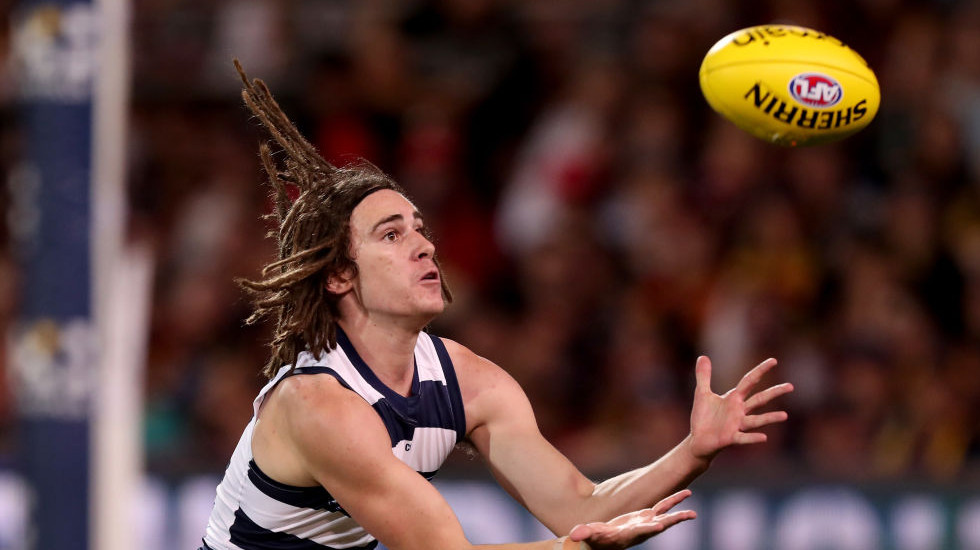
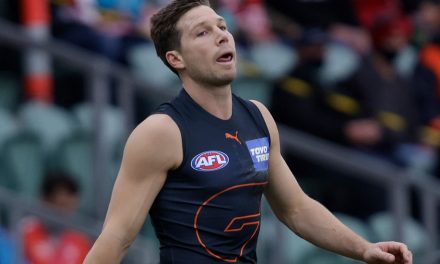
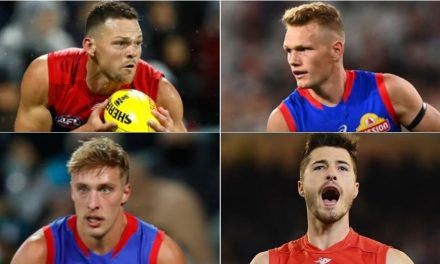
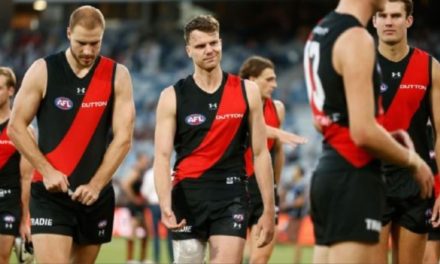
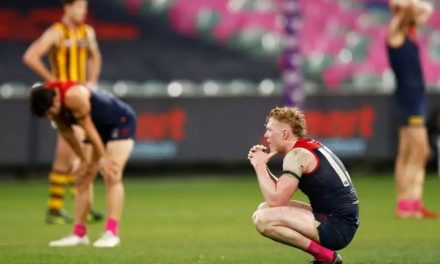






Although as a Cats supporter I think that Finey is way too simplistic and kind because other teams have followed the example of bringing back mature players with mixed success. I think that Steven Wells as the god-father of organized recruiting ( not organized crime) should be praised and the fact that sides find it difficult to clone him is because he is Geelong through and through. As a boy of around 8 or 9, he and his big mouthed mate, challenged my friend and I to a game of cricket. He just lived around the corner from my friend’s house and having met him at that time I saw that he was quite determined and thoughtful about how he bowled and batted. Later his brother Greg played for Geelong in the number 27. I was quite jealous because he was my arch enemy. Now he is the hero and legendary recruiter of father/sons and their fathers; mature age mysteries and draft smokeys. He has built recruiting centres in Perth and recently Adelaide and is now working his way into Ireland. Slantya Var. ( Irish for Cheers)
Hi Peter
You don’t have to be a Geelong fan to be a fan of how they go about their business.
Thanks for supporting Footyology,
Finey
Good insightful article. I have long argued that one plank to the Cats’ success over the past 10+ years has been their very smart decision to have their own VFL team. I think to begin with they were the only AFL team to do so and it has since been copied by quirte a few other teams. Makes absolute sense. Now to bring back the U19s!